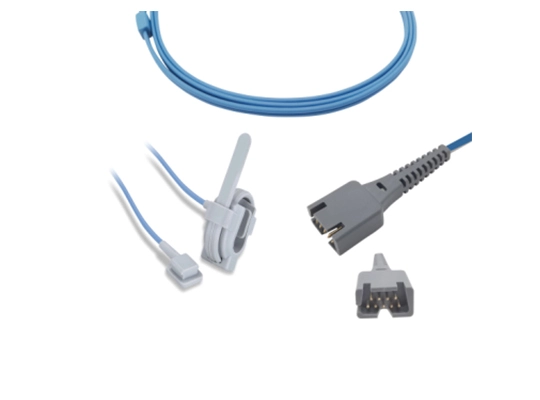In the realm of healthcare, the monitoring of oxygen saturation levels is a critical aspect of patient care, and SpO2 probes play a pivotal role in this process. As technology advances, the market offers a variety of SpO2 probe types, each designed for specific applications and patient needs. This comprehensive guide aims to navigate the diverse landscape of SpO2 probe types, shedding light on their features, functions, and clinical significance.
Finger clip probes are perhaps the most familiar type of SpO2 sensor, commonly seen in hospitals, clinics, and home monitoring devices. These probes are non-invasive and easy to use, typically attached to the patient's fingertip. The clip contains a light source and a photodetector, allowing it to measure oxygen saturation by analyzing the light absorption characteristics of hemoglobin.
The versatility of finger clip probes makes them suitable for a wide range of patients, from adults to children. They are particularly convenient for continuous monitoring during surgeries, recovery, or general patient observation. Advances in design have also made these probes comfortable for extended use, contributing to their widespread adoption in healthcare settings.
Earlobe sensors provide an alternative to finger clip probes, offering comfort and accuracy in oxygen saturation monitoring. These probes are designed to be attached to the earlobe, where blood vessels are close to the surface. This proximity allows for reliable readings, and the non-invasive nature of earlobe sensors makes them well-tolerated by patients.
The convenience of earlobe sensors is particularly beneficial in situations where finger monitoring might be challenging, such as in patients with circulation issues or when continuous monitoring is required during specific medical procedures. As these sensors gain popularity, manufacturers are incorporating ergonomic designs and materials to enhance patient comfort and compliance.

Forehead sensors represent a more recent development in SpO2 probe technology, offering an innovative approach to oxygen saturation monitoring. These sensors are typically designed as adhesive patches that adhere to the patient's forehead. The light-emitting and detecting components are integrated into the patch, allowing for continuous and unobtrusive monitoring.
Forehead sensors open up new possibilities in patient care, especially in scenarios where traditional finger or earlobe monitoring may be impractical. They find applications in neonatal care, where delicate skin and tiny limbs may pose challenges for other types of probes. The non-invasive and adhesive nature of forehead sensors ensures that infants are monitored without unnecessary discomfort.
In the dynamic landscape of healthcare, the choice of SpO2 probe type plays a crucial role in providing accurate and continuous oxygen saturation monitoring. Each type offers unique advantages, catering to specific patient demographics and medical scenarios. Finger clip probes, with their ubiquity and versatility, remain a stalwart in healthcare settings. Earlobe sensors provide an alternative for enhanced patient comfort and suitability in specific situations. Meanwhile, forehead sensors showcase the potential for innovation in continuous monitoring, particularly in neonatal care.
As healthcare professionals navigate the complexities of patient care, understanding the features and applications of various SpO2 probe types becomes paramount. The choice of the right probe type depends on factors such as patient age, medical conditions, and the nature of monitoring required. This comprehensive guide aims to empower healthcare providers with the knowledge needed to make informed decisions, ensuring that oxygen saturation monitoring is not only accurate but also tailored to the specific needs of each patient.